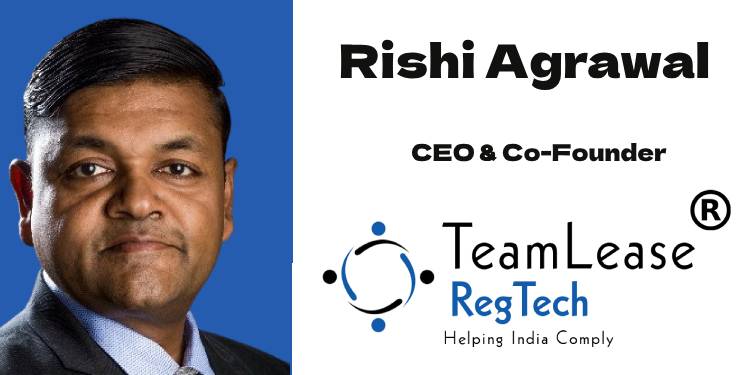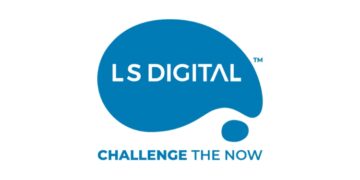The Advertising Standards Council of India (ASCI) is leveraging artificial intelligence (AI) to monitor and regulate the rapidly growing digital advertising landscape. This technology helps quickly identify misleading claims, exaggerated health benefits, and inappropriate content, ensuring consumers are protected from harmful messaging. The rise of online ads, especially in sectors like alcohol, healthcare, and digital finance, has made maintaining ethical standards increasingly challenging.
Traditional monitoring methods are struggling to keep pace with the sheer volume and speed at which ads are disseminated across platforms. A whopping 79 per cent of problematic ads were found online, highlighting the challenges in the digital advertising industry. The borderless nature of digital ads further complicates enforcement, as these ads can easily bypass geographical and jurisdictional boundaries, making it difficult to regulate and hold advertisers accountable.
ASCI’s new AI-based system aims to fill this gap by automatically scanning and analysing digital ads for potential violations of advertising codes. The integration of AI into ad monitoring is expected to enhance transparency and accountability among advertisers. By detecting and flagging non-compliant ads in real time, ASCI’s initiative can significantly reduce the incidence of misleading advertisements, protect consumers, and uphold ethical advertising practices. However, the move also raises questions about the potential challenges of AI implementation, including its accuracy, potential biases, and the need for human oversight.
Medianews4u.com caught up with Rishi Agrawal CEO, co-founder Teamlease Regtech to get his views.
Q. How big an issue are misleading claims, exaggerated health benefits, and inappropriate content in the ad industry?
With the Indian advertising market size reaching Rs.1,977.3 billion by 2032, and exhibiting a growth rate (CAGR) of 9.9% during 2024-2032, it is imperative to deal with misleading ads. Digital advertising is growing rapidly and is projected to reach USD 24.4 billion by 2030, this has resulted in a flood of non-compliant ads due to lenient regulations as compared to traditional media.
As per the Advertising Standards Council of India (ASCI), a shocking 85% of violative advertisements are found on digital platforms, emphasising the difficulties in monitoring and enforcing online compliance. Despite efforts to monitor these platforms, the compliance rate for digital ads remains low at 75%, compared to 97% for print and TV. In 2023-24, the number of complaints received by ASCI regarding advertisement being misleading and violative of norms was 12.75 per cent higher at 10,093 as compared to 8,951 in 2022-23.
Sector-specific violations are particularly prevalent, with the healthcare sector leading the way, accounting for 19% of the 8,229 ads scrutinized by ASCI in 2023-24. These often involve misleading claims about miracle cures, unverified health benefits, and exaggerated product efficacy, posing serious risks to consumer health and safety. Followed by illegal offshore betting (17%), personal care (13%), conventional education (12%), food and beverage (10%), and realty (7%).

Q. Is competitive pressure and the need to show demonstrable ROI the main reason for misleading ads?
Competitive pressure and the need to demonstrate tangible ROI are significant drivers behind misleading advertisements, but they are part of a broader ecosystem of factors. In highly competitive markets, brands often exaggerate product benefits to stand out and capture consumer attention. The pressure to show quick returns, especially in digital advertising where metrics like conversion rates and sales are closely monitored, causes advertisers to make unrealistic claims.
Additionally, economic pressures and investor expectations further exacerbate the issue. In economies experiencing slow growth or market volatility, companies are pushed to deliver strong financial results quickly, leading them to overpromise. Further, the lack of stringent regulation & oversight in the digital space, coupled with volatile consumer behavior and emerging niche markets, contribute to this issue.
The rise of influencer and affiliate marketing, with blurred lines between genuine endorsement and paid promotion, adds to the spread of misleading content. Moreover, technological advancements enable hyper-targetted advertising that exploits consumer vulnerabilities.
Q. Will the mandatory self declaration online certificate for ads help in the health sector? Should the certificate also be made mandatory for the finance sector?
The Ministry of Information & Broadcasting, following the Supreme Court’s decision in Indian Medical Association & Anr. v. Union of India & Ors, has made it mandatory for advertisers and advertising agencies to upload self-declaration certificates (SDCs) for television and radio ads on the Broadcast Seva Portal, and for print and digital advertisements on the Press Council of India’s website. Effective from June 18, this directive mandates that no advertisements will be permitted in print, on TV, or online without the submission of an SDC.
Advertisers for food and health products are specifically required to comply with the Supreme Court’s instructions and submit an annual SDC. Proof of this submission must also be provided to media stakeholders such as TV channels, newspapers, and digital platforms to ensure adherence to advertising guidelines.
The introduction of the mandatory self-declaration certificate for advertisements, particularly in the health sector, is a positive step toward promoting transparency and accountability in an industry often criticised for exaggerated claims and unverified product information. Like any attested paperwork, it fosters self-accountability as the first step and responsibility as the second, especially in the absence of compliance. Extending this requirement to the finance sector, where misleading ads promising guaranteed returns or downplaying risks are common, would also be beneficial.
That being said, the Supreme Court’s order, the Ministry of Information and Broadcasting (MIB) circular, and the SDC Guidelines overlook various aspects of advertising and enforcing these guidelines, particularly online advertising. The practical implementation of these requirements poses significant administrative and operational challenges, making them difficult to work effectively in the digital advertising space.
Q. What is your view on the Government’s move to combat surrogate advertising in the alcohol segment?
Companies may have to show how much water, CDs etc they sell. Marketing spends could also be forcibly limited according to media reports.
The Indian government’s move to combat surrogate advertising, particularly in the alcohol segment, is a necessary and timely intervention but may not be very effective in curbing it. Surrogate advertising, where brands promote non-alcoholic products like bottled water or CDs under the same brand name as alcohol, has long been a loophole allowing companies to bypass restrictions on alcohol advertising.
This practice has persisted despite the Cable Television Network (CTN) Rules, 1994, which prohibit advertisements that directly or indirectly promote the sale, consumption, or production of alcohol and tobacco products. Violators of these rules face jail terms ranging from 2 to 5 years and fines.
The government’s proposed requirement for companies to exhibit actual sales of non-alcoholic products may help expose and curb this practice of surrogate advertising, but the same cannot fully deal with the issue. For instance, companies could bypass the law by selling water bottles with high sales. If the government wants to deal with the issue effectively, alcohol brands’ image or persona should not be allowed to be re-used for other products.

Q. Could you share your perspective on the work that ASCI is doing to leverage AI to monitor the rapidly growing digital advertising landscape more effectively?
In a recent media interaction, Manisha Kapoor, CEO and Secretary General of the Advertising Standards Council of India (ASCI), emphasised the importance of collaborating with technology partners to develop AI tools specifically tailored to India’s advertising landscape.
She highlighted the need for AI integration to effectively address the unique challenges of the Indian market. Kapoor’s statement indicates a forward-thinking approach towards incorporating AI to enhance transparency and accountability in India’s dynamic advertising ecosystem.
If ASCI encodes its advertising policies and guidelines in AI based models, it can become a path breaking move and will be a game changer. The integration of AI models trained on Indian advertisements and ASCI’s guidelines will enable advertisers to pre-test their content for compliance before it goes live. This initiative is particularly beneficial for smaller advertisers, many of whom lack in-house compliance teams or dedicated marketing heads.
By using AI to analyse ads against ASCI’s standards, the SMEs can have compliant advertising at a lower cost and expertise with better accuracy. This proactive approach will not only help reduce the incidence of misleading ads but also fosters a more transparent and trustworthy advertising environment across digital platforms.
Q. What percentage of problematic ads are found online, and why is digital media particularly challenging to regulate?
As per a recent press release by ASCI on May 22, 2024, there were 8,229 ads scrutinized by ASCI. Out of these 8,229 ads, 85% ads were found on digital platforms reconfirming the finding that the compliance rate for digital ads remains low at 75%, compared to 97% for print and TV. As per the ASCI’s Annual Complaints Report sector-specific violations are particularly prevalent, with the healthcare sector leading the way, accounting for 19% of the 8,229 ads scrutinised by ASCI in 2023-24. Followed by illegal offshore betting (17%), personal care (13%), conventional education (12%), food and beverage (10%), and realty (7%).
It becomes significantly challenging to regulate digital media owing to different factors such as the obsoletion of existing laws due to advancement in technologies, for example with Generative AI tools, advertisers can automate creation of original content, including text, images, articles, and marketing collaterals–while the regulatory framework around AI-generated content is still evolving.
Another challenge is the existence of diverse digital platforms which encompass a wide variety of platforms featuring different types of content which can create compliance issues due to the borderless nature of the digital ecosystem and the complexities of cross-jurisdictional enforcement.

Q. Another problem is that influencers often do not disclose paid partnerships. What is the way out given that in the festive season this marketing vehicle will be bigger than in the past?
One of the growing challenges in the advertising landscape is the lack of transparency among influencers who often fail to disclose paid partnerships. This is particularly concerning as influencer marketing is set to grow even more during the festive season, when brands rely heavily on this channel for consumer engagement. The way forward involves a multi-pronged approach:
● Stricter Enforcement of Disclosure Rules: Regulatory bodies such as the Advertising Standards Council of India (ASCI) must enhance their enforcement efforts, ensuring that influencers clearly disclose paid partnerships or sponsorships. Penalties for non-compliance should be imposed strictly to deter influencers from bypassing these regulations.
● Platform-Level Regulation: Social media platforms like Instagram, YouTube, and TikTok should proactively monitor content for non-disclosure of paid partnerships. These platforms already offer tools to tag branded content, but enforcement needs to be tighter, possibly through algorithms that flag suspicious posts or mandatory content review systems.
● Brand Accountability: Brands must also take responsibility by ensuring that their marketing partners (influencers) are complying with disclosure regulations. Contracts between brands and influencers should include specific clauses on transparency, with penalties for influencers who fail to disclose paid promotions.
● Consumer Awareness: Educating consumers about recognising paid content is equally important. Increased awareness will empower consumers to make informed decisions and hold influencers accountable. Social media literacy campaigns run by platforms or consumer protection organisations can help users understand how to spot sponsored content.
Q. How does TeamLease RegTech help companies with compliance?
TeamLease RegTech is India’s leading regulatory technology company transforming Compliance. Its solution helps Corporate India stay on the right side of the law with a real-time environment that is trusted by over 1500 entities and 25,000 enterprise users in 45 industries.
It offers a cloud-based, multi-tenant, web and mobile Compliance SAAS solution that tracks all compliances and now has advanced workflows for automation of Labour and Secretarial compliance. A subsidiary of Teamlease Services, the company envisions a national open compliance grid towards cashless, paperless and presence-less compliance in digital India.
If we as a country want to be more competitive globally, our business environment has to be more enabling. It is here that TeamLease RegTech stands tall with its mission of keeping Corporate India on the right side of the law.
Q. What work does TeamLease RegTech do to help with data privacy and security?
TeamLease is a regtech company which offers compliance services in the form of software. The services help companies keep track of the regulatory updates and meet their compliance requirements on time to be on the right side of the law.
We ensure the safety and security of the sensitive data of our clients by keeping all information confidential. We follow the below mentioned standards for ensuring better data protection:-
● TeamLease is ISO 27001 and SOC 2 Type 2 accredited, adhering to top cybersecurity standards. We implement the NIST 800-53 framework for comprehensive security coverage.
● The company has been audited for SOC 2 Type 2 across security, confidentiality, integrity, and availability, and is compliant with ISO/IEC 27001 standards.
● We offer a process for external users to report security incidents and concerns.
Data Security Practices:
– Classifying sensitive information.
– Protecting data at rest and in transit.
– Real-time incident detection and response.
– Minimising impact and restoring systems after incidents.
Q. Is the media and entertainment sector an important client base like broadcasters, agencies? What work has been done with this sector recently? Kindly elaborate.
Yes, we have clients from the media and entertainment sector amidst our other clients. This sector is dynamic and growing by the day. We have been working with them to ease their compliance requirements given this ecosystem is wide and requires serious attention to details.
We recently helped one of our clients navigate smoothly through a total of 896 compliances in the sector, with 328 compliances under labour laws, followed by 152 in industry specific, 171 in Finance & Taxation, 135 in Secretarial, 52 general compliances, 49 in EHS and 9 under Commercial. Out of the total compliances, 163 compliances are to be dealt with monthly, 231 quarterly, 55 half-yearly, 187 annually, 1 two yearly, 2 seven yearly and 257 has no timeline, making the total number of compliance for a year 3000+.
To ensure compliance, companies in the media and entertainment sector must adhere to various laws and regulations. These include the Cinematograph Act, 1952 for film certification, the Cable Television Networks Act, 1995 for regulating cable networks and ads, and the Press Council Act, 1978 for maintaining journalistic standards. The Information Technology Act, 2000 governs digital content and liability, while intellectual property laws like the Copyright Act, 1957, and Trade Marks Act, 1999 protect content ownership.
Other critical regulations include the TRAI Act, 1997 for broadcasting, the Drugs and Magic Remedies Act, 1954 for misleading ads, and the Consumer Protection Act, 2019. The Digital Media Rules, 2021 oversee content moderation for OTT platforms, and the ASCI Code ensures fairness in advertising. Our team’s in-depth understanding and knowledge of these laws enable us to provide tailored compliance solutions to clients in this expanding sector.


















